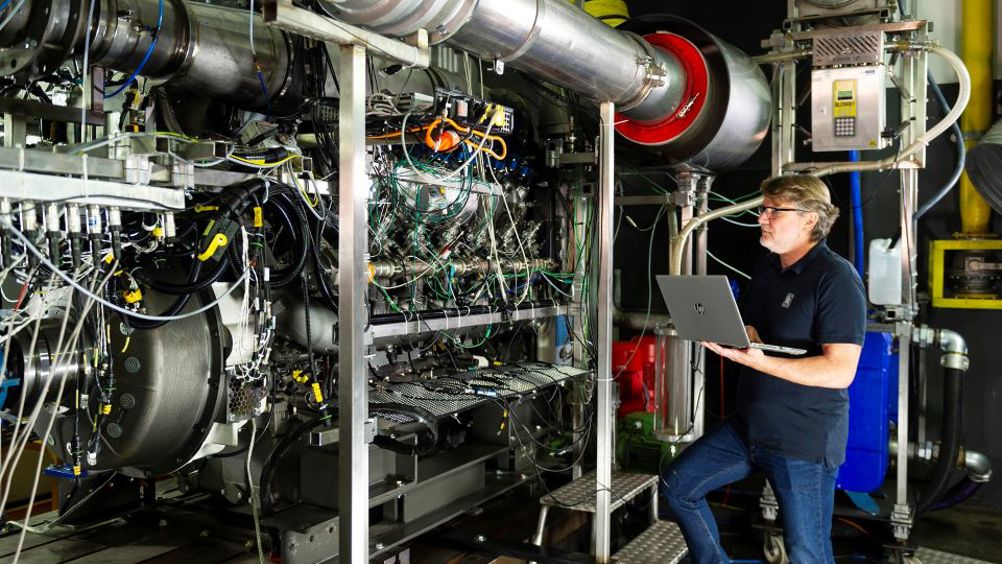The tests – which are said to have demonstrated very good characteristics in terms of efficiency, performance, emissions and combustion – are another milestone towards commercialising hydrogen solutions to meet customer demand for more sustainable energy.
In a statement, Tobias Ostermaier, president – Stationary Power Solutions, said: “This engine will serve the market demand for hydrogen solutions in the energy transition and will be available to our customers as a reliable and clean power source for gensets and combined heat and power plants.”
Related content
The first installation of mtu engines running on 100 per cent hydrogen is planned for the enerPort II lighthouse project in the German inland port of Duisburg, as part of the development of a climate-neutral energy supply for a new container terminal.
Dr Jörg Stratmann, CEO – Rolls-Royce Power Systems, said: “We see hydrogen as one of the central elements of the energy transition. It can be used for storage of excess energy and as a fuel, not only for engines but fuel cells and cogeneration plants to generate climate-neutral electricity and heat.”
For several months, the mtu gas engine has been undergoing bench testing and continuous improvement in relation to efficiency, performance, emissions and combustion using 100 percent hydrogen as fuel. With green hydrogen, Rolls-Royce said the mtu engines can be operated in a CO2-neutral manner in the future. Rolls-Royce is offering a conversion solution for gas engines already installed.
Andrea Prospero, an engineer at Rolls-Royce responsible for the development of the hydrogen engine, said: “The very low engine emissions are well below the strict EU limits, no exhaust gas aftertreatment is required.”
Due to the different combustion behaviour of hydrogen compared to natural gas, some engine components including fuel injection, turbocharging, piston design and control, were modified in the test engine.
Duisport is working with its partners to build a hydrogen-based supply network for its new terminal, which will be ready for operation in 2024. In the future, most of the electricity required by the port will be generated directly on site from hydrogen. This will be achieved by two combined heat and power plants with mtu Series 4000 hydrogen engines (with a total installed capacity of 2MW) as well as three mtu fuel cell systems (with a total installed capacity 1.5MW).





Labour pledge to tackle four key barriers in UK energy transition
I'm all for clarity and would welcome anyone who can enlighten me about what Labour's plans are for the size and scale of this Great British Energy....